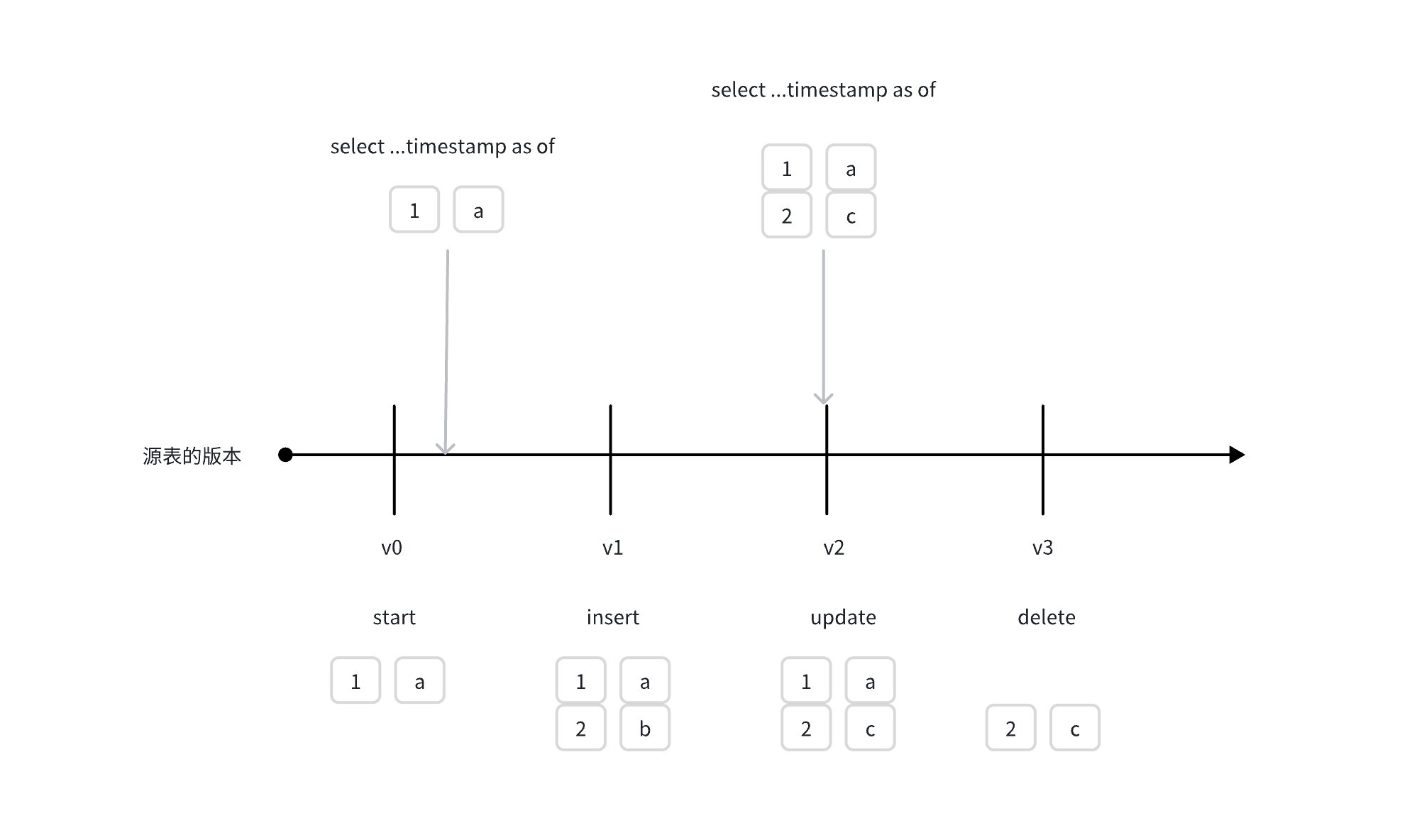Lakehouse Time Travel Feature Usage Guide
Introduction to Time Travel Feature
The Time Travel feature of Lakehouse allows you to easily access data at any point within the time travel window. This means you can view data at different points in time and even restore to a previous data state.
With Time Travel, you can query updated or deleted data, restore deleted tables, or recover expired tables.

As shown in the figure above, the table originally had one piece of data, and operations such as insert, update, and delete were performed on the table, resulting in a total of four versions. When the specified version is between v0 and v1, it will return the data of v0. By specifying the version through Time Travel, you can view historical version data.
Accessing Data at a Specific Point in Time
Setting Data Retention Period
You can configure the data retention period for Time Travel to determine how long data is retained within the time travel window. Depending on your needs, you can set different retention periods.
The Time Travel retention period determines how far back you can access data. For example, if the Time Travel retention period is set to 7 days, you can access data from any point within the past 7 days. If it exceeds 7 days, you will no longer be able to use Time Travel to access expired data, and the data will be physically deleted.
Currently, in the Preview version, the default retention period is 7 days, allowing you to query data within 7 days. In the future, Lakehouse will charge storage fees separately for Time Travel.
Setting Data Retention Period on a Table
You can set the data retention period for a table using the following SQL statement:
The setting range for num is 0-90, indicating the number of days the data is retained.
Restore Deleted Objects
If you accidentally delete an object, you can use the UNDROP command to restore it. Here is an example of restoring a deleted table:
This command will restore the deleted table named orders.
Restore Data to a Specific Version
Using the RESTORE command, you can restore data to a specific version. This is useful for rolling back or fixing erroneous data changes. Below is an example of restoring data to a specified version:
This command restores the data of the orders table to the version as of 10:00:00 on March 1, 2023.
